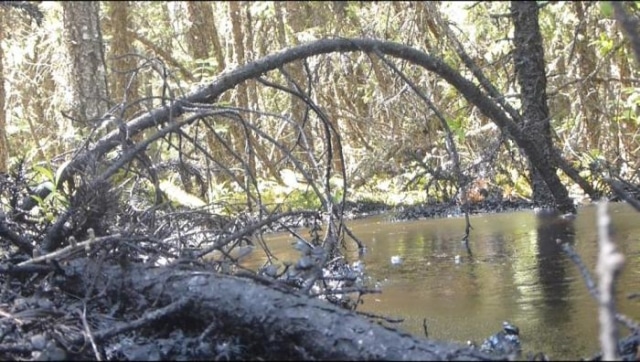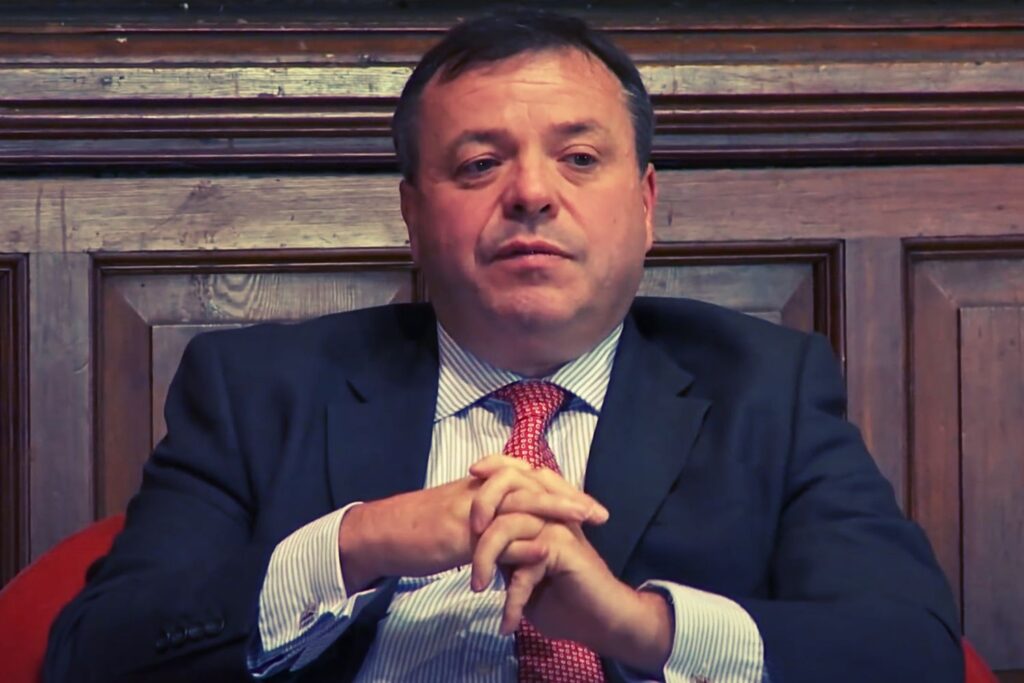The ongoing trouble on the Cold Lake Air Weapons Range in North Eastern Alberta, where oil company Canadian Natural Resources Ltd. (CNRL) has numerous in situ oil recovery sites, has yet to show signs of abatement.
Underground oil spills on CNRL’s Primrose facility have been leaking bitumen emulsion into the muskeg, waterways and forest that surround the site for nearly three months.
The Alberta Energy Regulator (AER) says the total volume of bitumen emulsion recovered from four separate sites where the seepage is ongoing is now 1275.7 cubic metres, the equivalent of 8024 barrels of oil or 1.27 million litres.
The original volume of the spill was reported as 28 cubic metres.
In addition, 397 cubic metres of “oily vegetation” has been removed from one of the sites numbered 09-21, and 5096.66 metric tones of “impacted soils” have been removed from the other three.
“Clean up continues on all four sites,” says the AER in an updated incident report released yesterday.
“Bitumen recovery at the source, skimming of other areas within water body and vegetation cutting continues” at site 09-21.
“Bitumen recovery, soil removal, fissure exposure, surface water management and containment efforts continue” on the three additional sites.
CNRL, the company responsible for the spill, released a press statement on July 31 stating “each location has been secured and clean-up, recovery and reclamation activities are well underway.”
Last week Cara Tobin from the Alberta Energy Regulator said, “the spill is still ongoing. There is still bitumen coming up from the ground…it is not under control [because] bitumen is still coming up…”
She provided no comment Wednesday, indicating a revised incident report would be published Friday, August 15.
That report states “2 beavers, 31 birds, 82 amphibians, and 31 small mammals” have died as a result of the spill.
“Wildlife fencing and deterrents are installed and CNRL continues to monitor all four sites for wildlife and impacted wildlife.”
The exact cause of the uncontrolled spill has yet to be determined. CNRL cited mechanical failures at the well as a potential cause in its press statement, although Tobin from the AER said “we do not have the technical data or evidence to verify what that cause might be – what the cause or causes might be. We will determine that through our investigation process.”
According to the revised incident report a “subsurface investigation has been initiated and is ongoing.”
CNRL experienced a similar incident in 2009 on their Primrose site. According to Tobin that incident “was the same sort of thing where pressure pushed bitumen to surface and until that pressure was naturally able to recede underground the product continued to – very slowly – come to surface.”
Multiple investigations into the cause of the 2009 underground spill were inconclusive, although the Energy Resources Conservation Board (now the AER) stated “a contributing factor in the release may have been geological weaknesses in combination with stresses induced by high-pressure steam injection.”
CNRL uses a process called High Pressure Cyclic Steam Stimulation (HPCSS) in the region to release bitumen from underground rock formations. The process uses extremely high-pressure steam injection to fracture the underlying reservoir to “create cracks and openings through which the bitumen can flow back into the steam-injector wells,” according to the AER.
Roughly 80 percent of Alberta’s bitumen deposits will be extracted using this and other in situ methods.
Last week more than 20 groups called on the AER to conduct a public inquiry into the safety of in situ operations.
“While the AER has suspended and restricted steam injection operations at the CNRL Primrose operations in response to the most recent events, it is unacceptable to have long fissures in the ground that will continue to spill toxic heated bitumen to surface, and to further risk our water and groundwater resources from these activities,” said Carolyn Campbell, Conservation Specialist with the Alberta Wilderness Association.
“The time has come for a broader inquiry into CSS and SAGD [steam assisted gravity drainage] steam injection operations,” she said.
Image Credit: Emma Pullman
Subscribe to our newsletter
Stay up to date with DeSmog news and alerts







